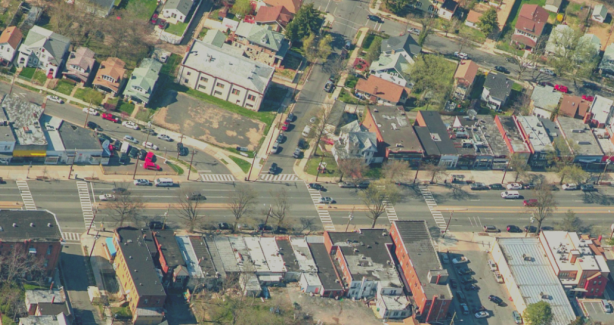Inclusionary Zoning
What is Inclusionary Zoning (IZ)?
IZ is a land use technique for developing diverse mixed-income communities by requiring each new residential development to make a percentage of the new units affordable to targeted incomes. It often lets developers build more units through a “density bonus” along with other incentives to help the program operate better. IZ requires most new and some renovated residential developments include some affordable homes.
IZ is rooted in the Comprehensive Plan. In 2006, the Council of the District of Columbia passed both the Comprehensive Plan for the National Capital and the Inclusionary Zoning Act of 2006, which give policy guidance and empowers the Mayor to administer the program. The Zoning Commission adopted amendments to the Zoning Regulations to include IZ.
- The zoning regulations can be found on the Office of Zoning’s website.
- The administrative rules can be found at the Department of Housing and Community Affairs website dhcd.dc.gov/inclusionary-zoning
The existing IZ program, referred to as “Regular IZ,” is one of many tools that creates affordable housing in the District. Regular IZ requires a percentage of total residential floor area be “set-aside” for affordable units in new residential development when 10 or more units are provided.
Regular IZ set-aside requirements for affordable units are generally as follows:
- 8%-8.33% of the total residential floor area for buildings constructed out of steel and concrete, and
- 10%-12.5% of the total residential floor area for buildings constructed out of wood.
Regular IZ requires affordable units to be affordable to households earning no more than 60 percent of the median family income (MFI) for rental housing and 80 percent MFI for ownership housing.
What is IZ+?
On January 3, 2020, the Office of Planning (OP) filed a report with the Zoning Commission (ZC) for a proposed concept to expand the existing IZ requirements to create higher affordable housing set-aside requirements for certain map amendments. On July 15, 2020, OP hosted a virtual public roundtable to garner feedback on the proposed IZ+ concept. OP refined the proposed concept and drafted text informed by the roundtable and submitted it to the ZC for a public hearing.
After a virtual public roundtable (Viewable on YouTube at IZ Roundtable) and a public hearing the ZC voted to approve the text amendments on June 10, 2021. To access additional information regarding IZ+, review the ZC case record for Case No. 20-02.
IZ+ is triggered through a map amendment request and establishes an affordable unit set-aside requirement higher than regular IZ. For IZ+ to apply, the rezoning must result in a zone that permits higher density development than what was permitted by the former zone and not be located in an area that has an overconcentration of existing affordable housing.
The general IZ+ set-aside requirement for affordable units is a sliding scale up to 20% of the total residential floor area. It is determined by the percent increase from the maximum permitted density of the former zone to the total density built in the new residential development. The intent is to require a significant amount of affordable housing when the maximum permitted density of a property is increased through a map amendment. Map amendments must be not inconsistent with the Comprehensive Plan’s Future Land Use Map.
What is IZ-XL?
OP continues to find new ways to meet Mayor Bowser’s challenge to produce more affordable housing in a more equitable way across the District. In 2021, OP further expanded IZ requirements through two zoning text amendments known as IZ-XL.
IZ-XL Phase 1 (Case No. 21-02)
The first phase of IZ-XL, the text amendments:
- Expanded the regular IZ program to the following previously exempt zones:
- R-3 in the Anacostia Historic District;
- RA-5 and RA-10 (Dupont Circle);
- CG-1;
- MU-13 in the Georgetown Historic District;
- MU-27 (Naval Observatory); and
- NC-6 (Eighth Street) in the Capitol Hill Historic District, and
- Increased the height threshold from 50 ft to 85 ft as it relates to type of construction and the corresponding regular IZ set-side requirement for all zones subject to IZ.
The text amendments provide new bonus densities for the provision of IZ units in zones that were exempt and aligns the IZ set-aside requirements with the recent changes to the building code, which allows buildings to be stick-built up to 85 feet in height.
The ZC held a public hearing on April 26, 2021 and took final action on October 14, 2021. The new regulations are effective January 1, 2022.
IZ-XL Phase 2 (Case No. 21-05)
For the second phase of IZ-XL, the text amendments apply the regular IZ program to existing non-residential buildings (i.e. office buildings, hotels, etc.) that convert to residential use. Prior to the text amendments, existing buildings converted to residential use were generally exempt from the IZ program.
The text amendments apply to conversions when:
- The change to residential use results in 10 or more new dwelling units, and when
- The building is located in a zone where IZ already applies.
The text amendments apply regardless of whether the size of the existing building is retained or enlarged. All requirements of the regular IZ program apply.
The Zoning Commission held two public hearings on June 28, 2021 and October 7, 2021 and took final action on December 16, 2021.











